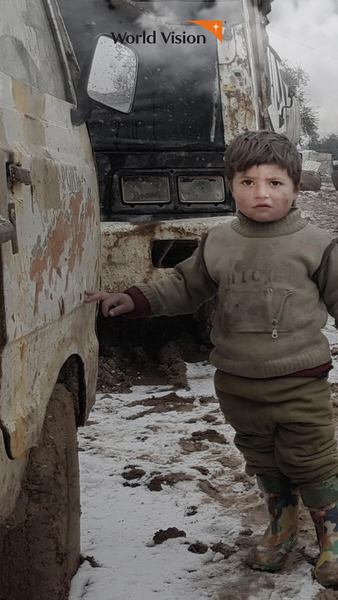
● Only one person out of thousands World Vision surveyed had received a COVID-19 vaccine.
● 84% of all available vaccine doses have been administered in richest countries with as few as 0.1% administered in poorer nations
● Most refugees live in lower income countries and are being left out of the extremely limited vaccination campaigns
Hunger is becoming a major concern for refugees, with 77 per cent unable to meet food needs during the global pandemic, a snapshot by World Vision has found.
A new report by the international aid agency also warns that refugees and internally displaced people - who are at high risk of contracting COVID-19 - are the lowest priority group for vaccinations.
The High Risk- Low Priority paper says that COVID-19 is now surging in poorer countries which are ill-equipped to contain the virus, but have access to just three per cent of global vaccine doses. These countries host over forty million of the world's forcibly displaced people, who as a result, are being left out of the extremely limited vaccination campaigns that host countries can deliver.
In the lead-up to World Refugee Day (June 20), World Vision Australia CEO Daniel Wordsworth said it is time for the world to show humanity and compassion to the world's most vulnerable people.
"These are people who have been forced to flee their homes, whose children have been pulled out of school and forced to work or pushed into early marriage to ensure their survival," he said.
"COVID-19 has added another layer of devastation to their lives. This report shows 72 per cent of those surveyed are earning less, 40 per cent had lost a job and most can't even meet the basic need of a proper meal.
"So far we've been able to avert a disaster in many of the refugee camps and settlements. But world leaders need to work together to ensure our worst nightmare isn't realised – and prioritise these people for vaccinations."
Higher income countries are vaccinating their populations 25 times faster than nations with the lowest incomes and have ensured that their own most vulnerable people are protected, the report says.
Mr Wordsworth said that the situation had implications for all nations and the pandemic "would not end anywhere – until it ends everywhere".
Research carried out by World Vision in Brazil, Colombia, DRC, Jordan, Peru, Turkey, Uganda and Venezuela found that:
• Only one person out of 1,914 people surveyed had received a COVID-19 vaccine.
● 68 per cent had not heard of plans for vaccinations in their communities. Almost half (47%) thought they weren't eligible - or didn't know they were.
● The impact of COVID-19 is growing, with 68 per cent unable to meet healthcare needs and 77 per cent unable to meet rent
● 40 per cent of the respondents said communities became less safe for children and the same number reported a lack of shelters for children
Last week at the G7 world leaders pledged to donate one billion COVID-19 vaccines to the world's most vulnerable.
World Vision is calling on donor governments to ensure that this pledge turns into a reality and to secure equitable access to the vaccine for forcibly displaced people as a priority.
It also calls on host governments to include all forcibly displaced people, regardless of their legal and documentation status, in Covid-19 vaccination plans and roll outs, prevention measures and social protection initiatives on equal footing with their own citizens.
Despite more than 190 countries committing to COVAX to deliver 2 billion vaccine doses for at least 20% of the most vulnerable and high risk-groups by the end of 2021, deliveries are both underfunded and delayed.
You can access a copy of High Risk- Low Priority here.






